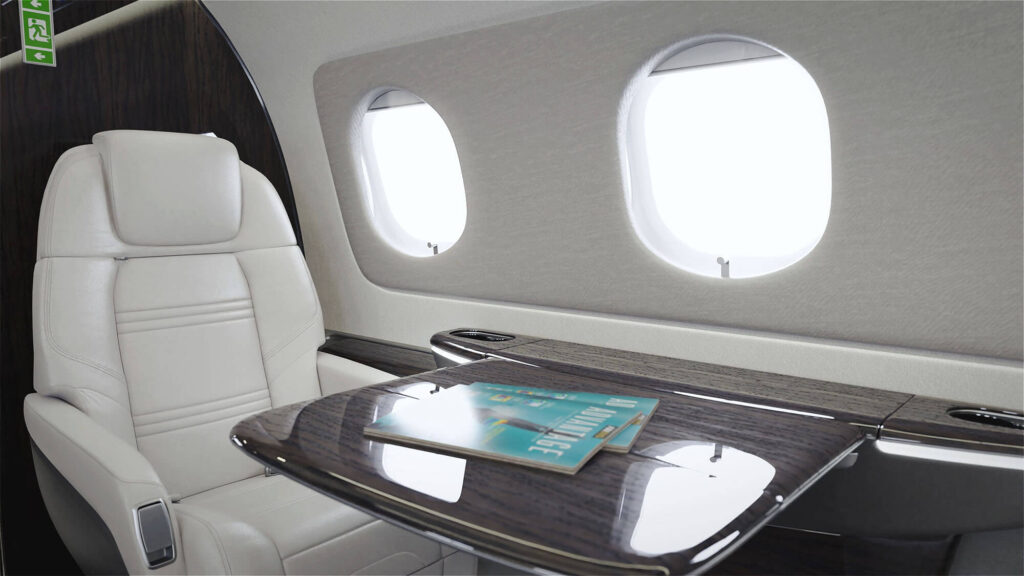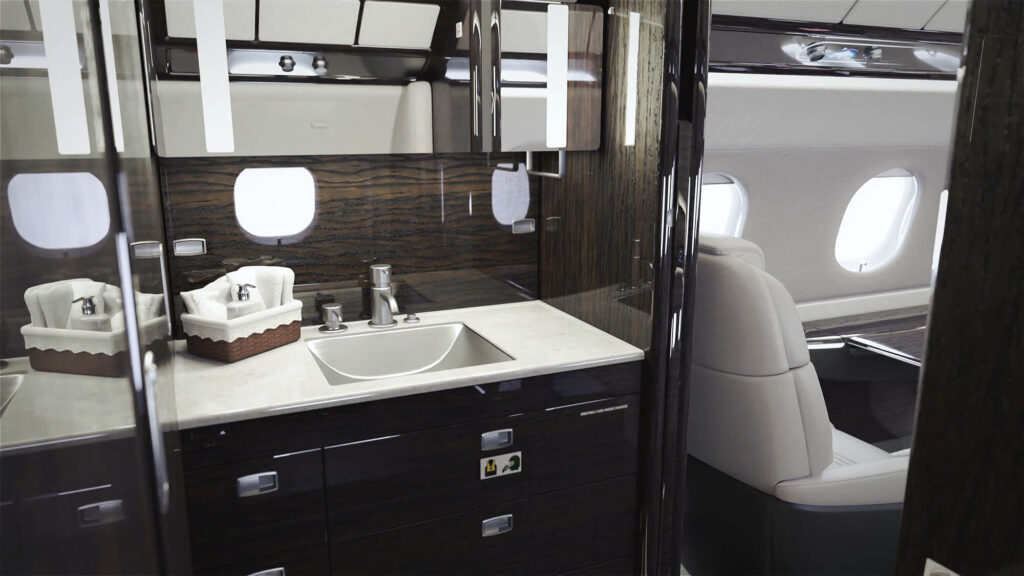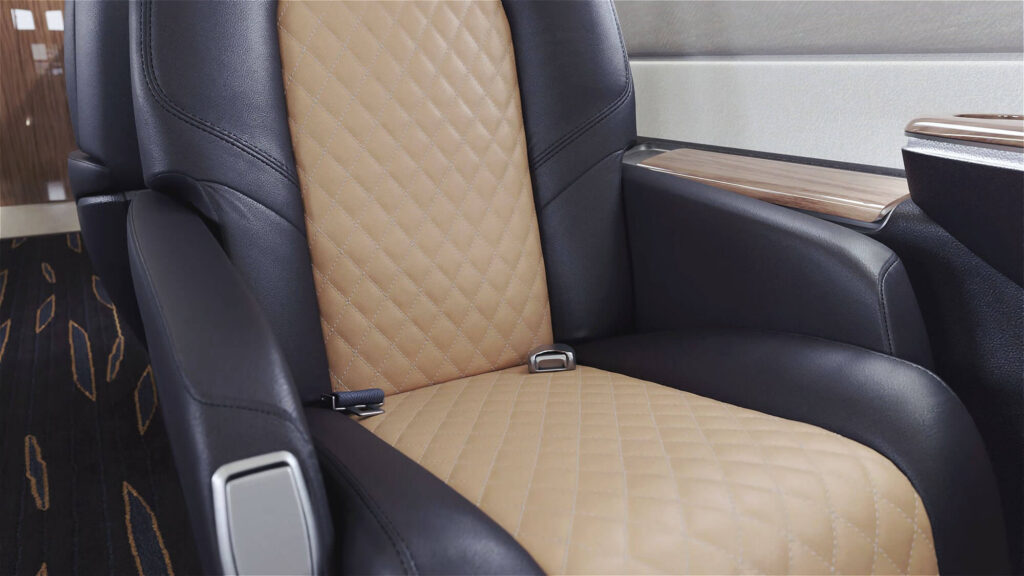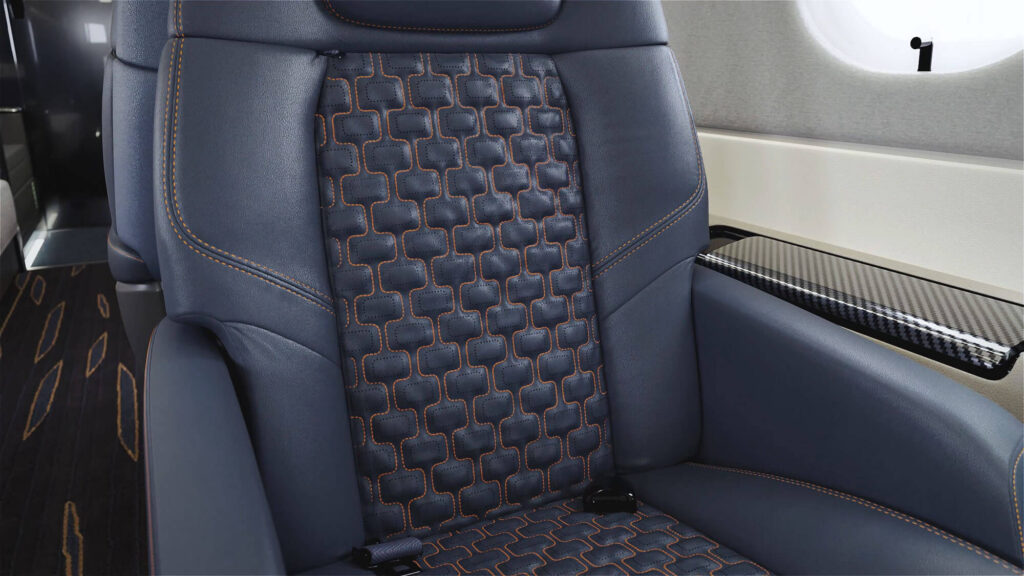In order to dig deep into what makes a great aircraft rendering, we need to first go back in time a bit.
About 60 years ago, to be exact.
The history of modern aircraft rendering can be traced as far back as the 60s when Dr Ivan Sutherland invented Sketchpad, a software that enabled users to produce digital drawings in real-time directly on the computer display.
But that was only the beginning for an industry that now provides not only stunning and photorealistic interior design but immersive AR and VR experiences. Naturally, as interior aircraft design consumers get pickier, the software to develop and customize said designs get more sophisticated.
Aircraft rendering continues to grow, wowing customers with hyper-realistic materials, disruptive design, and lighting so natural-looking that all it takes is one glance to capture the attention of the customer and seal the deal.
What is truly remarkable about this technology is the beauty in the details.
This recent 3D visualization we created for Embraer’s Praetor 600 Bossa Nova is a great example of this. When describing their perfected design, they said they wanted to evoke Brazilian culture (in reference to its name: “Bossa nova”) and bring the feeling of the beaches of Ipanema to the passengers.




If you want to check the work we did for Embraer closely, take a look at the Praetor 600 microsite.
This state-of-the-art aircraft has been designed by using carbon fiber materials. “Piano-black coloring” combined with stitches that reminisce of Ipanema’s sidewalk. All of the above only serves to perfectly compliment the rendering of the majestic Praetor 600. Safe to say, the interior’s coloring, the stitching, and all-in-all ambience are hyper-realistic and visually self-explanatory.
The experience will be genuine as long as the lighting and scalability of objects are near hyper-realistic. Ultimately, it should feel like they are on a simulator, where they’re in control of the changes. It’s both consumers’ and designers’ dreams come true. And it keeps evolving before our eyes.
Now, let’s take a look at the keys to creating a winning aircraft rendering
Keys to Creating a World-Class Aircraft Rendering
As you know, In the process of creating the visualization of this art, there are certain key elements to consider. Keeping the following variables in mind will, ultimately, make that world-class-rendering you aim for.
According to Kurt Strand, from Strand Craft Yachts, “A great rendering will make customers want to buy the product or it can also create new opportunities for new designs. That being said, it’s not really the quality of the rendering it’s the quality of the design what wins customers.” That means that before thinking of a rendering, pay close attention to the design so you make sure that your rendering is 100% faithful to the original.
Here are some pointers that should guide you in your quest of creating the best aircraft rendering.
Establishing a healthy, solid, and trusting relationship between the renderers and designers.
Both parties need to know that their roles are equally important when it comes to the making of a jaw-dropping, hyper-realistic visualization.
This is especially true for aviation renderings, where absolutely every inch matters. In a word, the job won’t get done unless both agree to work together and learn to complement each other.
Otherwise, poor communication, lack of professionalism and or of a collaborative spirit will all ultimately reflect in a sloppy looking rendering.
Maintaining an equally healthy, solid, and trusting relationship with the client
We cannot stress this enough. Communicate constantly with your client. Keep them in the loop.
Ask questions and listen carefully to the answers. Use this service to show them how much you care that the rendering is visually impacting and as hyper-realistic as possible.
Take as much time as needed to understand what their vision is and reproduce it by means of the rendering.
While the aforementioned are the foundation that holds the whole structure, during the actual rendering process, things can get sketchy (pun intended).
The following are some aspects to bear in mind when creating a rendering.
Materials
Pay attention to details. Ie, correcting wrinkles in leather; making stitchings look realistic (versus pasted from the map onto the render), the veneer’s glossiness.
Lighting
Work on natural lighting for daylight scenes, in order to recreate the lighting of a plane in mid-flight, so as to reinforce that feeling of “realism” in our images. These must be worked upon over and over until the precise contrast is achieved, and the “digital touch-up” is untraceable.
At the same time, though, that same lighting needs to enhance and further highlight colors, lights, and shadows in a way that is attractive to the eye.
We all know advertisement photographs have a meticulous post-production process, despite representing real objects and /or situations.
The secret, and the goal, is to be so meticulous in the post-production step, that the rendering looks natural and authentic.
Color Reproduction
This is by no means a minor detail. Designers expect to see the exact same Pantone of color on the rendering as they look in real life. And on that note, they’re particularly interested in knowing how those colors behave in different kinds of lighting (ie natural vs artificial).
Post-Production
In short, your main goal is to create a work of art, a result of countless hours of testing colors, playing with different kinds of light, camera angles, and trims. They’re important as their presence is what provides the interior “ambiance” to certain elements in the aircraft, such as seats and other furniture. These also need to look life-like.
If you were intentional about all of the above, the final product should look photorealistic, visually stunning, and extremely convincing at a first glance.
3 Benefits of Aircraft Rendering
Visualizing Tight Space
The difference will show in certain very specific details, such as the lighting, shade, brightness, and how it all comes to life with the appropriate use of cameras to give you that sense of “being inside” a world you’re shaping, one pixel at a time.
You’ll be able to surf around the most infinitesimal pixel with a surgeon’s precision. So, for example, with the help of the appropriate cameras, you’ll get the right look and feel of a bathroom.
Customize everything — even the seats!
So the color of the seats is dull, or lacks that extra oomph? Speak to the design team, just suggest a different color and, within seconds, try another option. From the color scheme all the way to the stitches, make the design your very own and visualize the revisions using 3D rendering.
Materials
Rounding up the materials for your aircraft interior design is much like creating your own vision board. With the difference that everything you find needs to be the literal visual replica of what can be found in real-life. Anything less will both corrupt and possibly ruin the render.
In the early stages, of course, you can send in scans of images that you’d like to inspire your vision. However, as the design process develops, materials need to look as real as possible. On this note, each client has a different preference.
This is why, in the initial conversations, we suggest you pay acute attention to the details of what they’re looking for visually. Sizes, textures, and scalability are all key components to creating a hyper-realistic rendering.
Populating Your Scene
This is where the magic happens. A great first look at your interior scene needs to appear lively and fresh. Get hold of as many 3D props you can and start to populate your scene.
This is your world. And you give it as much detail as you want. Maybe you want to mount a scene where a tablet is open on a table, and the chair is overlooking the cloudy sky from the plane’s window. All of this can be done in a 3D rendering.
Wondering what the present and future of aircraft rendering look like? Watch the animation of the Praetor 600. They say an image is worth a thousand words – imagine what you could do with the visual impact of a hyper-realistic aircraft rendering. Better yet, let’s do it together!
Make your own vision come true with us!



